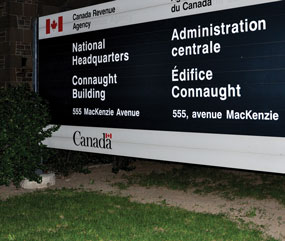THE BEPS EFFECT
On its face, the Liberal government’s first federal budget, tabled in March 2016, includes various measures that appear to advance Canada’s commitment to the Organisation for Economic Co-operation and Development’s (OECD) crusade against base erosion and profit shifting (BEPS).
The measures include limiting treaty benefits by expanding the application of “back-to-back” interest rules to apply to payments of rents and royalties, to “economically similar” arrangements notwithstanding the form of those arrangements, and to arrangements involving multiple intermediaries. As well, the budget has tightened up the “control exception” to the surplus stripping rules.
Canada will also implement country-by-country reporting, revise its transfer-pricing guidance to ensure it meets the BEPS standard, and implement the BEPS minimum standard for the spontaneous exchange of certain tax rulings as well as the common reporting standard for the automatic exchange of information among participating countries.
But Nathan Boidman of Davies Ward Phillips & Vineberg LLP in Montréal has long expressed doubt that BEPS was rolling out anything that developed countries hadn’t already considered or that it would change how international tax law is formulated in countries like Canada.
“For the OECD to say that the G20 should adopt anti-treaty-shopping rules, for example, is tantamount to getting a ‘new glimpse of the obvious,’ as former RJR Nabisco CEO Ross Johnson once said,” he says. “Canada and other countries have been trying to prevent inappropriate treaty shopping for years.”
At their core, the BEPS “deliverables” or recommendations, released in October 2015, take aim squarely at global profit shifting. “The key principle is that profits should be located where value is created and where economic activity actually takes place,” says Carrie Smit of Goodmans LLP in Toronto.
Accordingly, the voluminously detailed deliverables have “action items” that embrace transfer pricing, treaty shopping, hybrid entities and instruments, interest deductibility and harmful tax practices.
But Canada has been working on many of these issues for some time. “The government has long made it clear that it wants to manage abuses at the cross-border level,” says Carman McNary of Dentons Canada LLP in Edmonton. “There have been increasing efforts to do so at the policy level despite the fact that the issues are very complex and becoming more so.”
The upshot is that Canada may already be significantly onside with BEPS.
“The Ministry of Finance has been ahead of the curve in terms of domestic rule-making that counters the perceived problems, so I don’t think that Canada has a whole lot to do on the BEPS front,” says Claire Kennedy of Bennett Jones LLP in Toronto.
By way of example, Canada amended its foreign affiliate dumping rules to counter perceived abuses by foreign-controlled corporations several years ago and dealt with hybrid issues in the 2008 protocols to the Canada-United States tax treaty. “Overall, our rules are pretty sophisticated,” Kennedy says.
The Canada Revenue Agency has also introduced an Offshore Tax Informant Program. “The OTIP offers financial awards to individuals who provide information relating to certain types of ‘major international tax non-compliance,’” says Michael Friedman of McMillan LLP in Toronto. “Over the past year, it has received 1,920 separate contacts from potential informants under the OTIP, which led to over 200 written submissions and 110 cases that are currently being reviewed.”
Still, it goes without saying that authorities need to be on their toes to stay ahead of the tax planners.
“Companies will look at the rules and continue to try to find ways through the minefields,” says Jack Blackier of Cox & Palmer in Saint John, New Brunswick. “I see BEPS as an attempt to catch up to what commercial organizations are already doing, but it’s very hard for tax authorities to keep in front of them.”
Yet BEPS is long on principle but short on substance. “BEPS articulates certain minimum standards that participating nations have ‘morally’ undertaken to adopt and certain best practices that they may not adopt,” Boidman says. “But in point of fact, treaty shopping is the only substantive area where the BEPS negotiators have actually agreed on minimum standards.”
To be sure, the budget did announce the federal government’s intention to adopt certain BEPS transfer-pricing guidelines without amending s. 247 of the Income Tax Act, which articulates the “arm’s-length principle” that is the basic statutory rule governing transfer pricing in Canada. But adopting the international standards without legislative action flies in the face of the Supreme Court of Canada’s pronouncement that the OECD transfer guidelines are not per se law in Canada, and subsequent judicial interpretations that enunciate a domestic standard for the arm’s-length principle that differs from the BEPS standards.
“The budget indicates that the CRA intends to effectively ignore the Supreme Court and try to use BEPS transfer-pricing-related recommendations in its interpretation and enforcement of the ITA, a move that quite likely will increase disputes and litigation between multinationals and the CRA,” Boidman says.
As well, while the policy behind BEPS is generally sound and international cooperation is on the rise, the competition for investment remains intense.
“The ideal would be to have capital flow seamlessly around a uniform set of rules, but that would work against the competitive interests of various jurisdictions who will continue to carve little niches for themselves,” says Robert McCue of Bennett Jones in Calgary. “I doubt that the reality of BEPS will be anywhere near as large and potent as it appears to be.”
If there’s going to be further substantive change, it will likely come in relation to interest deductibility.
“OECD is advocating an approach that would look at overall limits on debt owing to affiliates and third parties, while current Canadian rules focus on debt from within the group,” Kennedy points out.
Still, BEPS will likely have its greatest impact at the margins. “The BEPS proposals will result in pressure on tax havens, flush out more and more whistleblowers and generally smoke out the very worst of tax evasion,” McCue says.
Most of all, BEPS will impact administratively: the CRA, for example, has for some time been intensifying its scrutiny of international transactions.
“Transfer pricing is all the rage,” says Glenn Ernst of Goodmans in Toronto. “Everyone’s talking about the increased audit activity and waiting for the shoe to drop in terms of how the case law continues to develop.”
What is looming is a regime that is considerably more onerous, especially for multinationals. “BEPS has encouraged the CRA to seek more information from foreign jurisdictions and place more importance on documentation, including very comprehensive new reporting requirements on a company’s operations in every country in which it does business,” Friedman says.
The sheer volume of information the CRA is requesting can be overwhelming, even for a multinational.
“We are seeing tax authorities, with increasing frequency, making far-reaching requests where the burden to the taxpayer outweighs the benefits to the auditors,” says Steve Suarez of Borden Ladner Gervais LLP in Toronto. “Many of these are of questionable relevance and need to be pared back.”
But the fact remains that BEPS represents a new global dynamic in relation to tax policy.
“Previously, tax laws were the result of one-off, totally uncoordinated initiatives by individual countries that were implemented by bureaucrats far from the public view,” Boidman says. “There has never been such an intense international consultation – one that could reasonably be labeled as a crusade – aimed at stamping out international tax planning, and it’s being played out on the front page with the politicians supporting the bureaucrats.”
Indeed, McCue believes that BEPS’s greatest impact will occur outside their actual implementation in individual countries.
“The talk about cooperation is already putting a considerable chill on tax planners,” McCue says. “The situation is akin to that when the general anti-avoidance rule was proposed in Canada: the greatest effect occurred while the proposals were looming.”
Stephen Ruby of Davies Ward Phillips & Vineberg in Toronto concurs. “Any responsible tax practitioner in Canada is already taking BEPS into account,” he says. “When doing cross-border tax planning, for example, they’re trying to build in flexibility or an escape route so they can bail out of the plan or pull the strings without inducing adverse tax consequences if a BEPS measure that upsets the plan is implemented.”
DOES CRA OWE TAXPAYERS A DUTY OF CARE?
The Québec Court of Appeal’s recent award of $2.4 million, including $1 million in punitive damages, in favor of a company destroyed by Revenu Québec’s abuse of its powers has gone a long way to imposing a duty of care on Canadian fiscal authorities.
“It will now be easier for businesses and individuals to argue that the Canada Revenue Agency and other tax authorities must administer the law in good faith and refrain from behavior that is abusive or irrational,” says Martin Sorensen of Bennett Jones in Toronto.
To be sure, Agence du revenu du Québec c. Groupe Enico inc. turned on the duty of good faith enshrined in Québec’s Civil Code. But the decision is in line with two common-law rulings on the point: both the Federal Court of Appeal’s decision in Canada v. Scheuer, released just weeks before Enico, and the BC Supreme Court’s 2014 judgment in Leroux v. Canada Revenue Agency, affirmed that the CRA has a duty of care to taxpayers.
“Generally speaking, the duty of care is well known to the common law and the principles discussed in Enico are similar to those dealt with in Leroux,” Sorensen says.
The decisions might make the CRA and other tax authorities somewhat easier to deal with because they suggest that the Agency is not at liberty to intimidate and threaten taxpayers as it chooses and has a responsibility to take appropriate care in deciding to take steps against them.
“These decisions should over time result in a difference in the way the CRA treats taxpayers and their rights,” says tax lawyer David Rotfleisch of Rotfleisch & Samulovitch Professional Corporation in Toronto.
Still, Sorensen is careful to point out that Enico featured “outrageous” facts, including information withheld from the taxpayer, destroyed notes, lost evidence, auditors operating under false pretenses, fraudulent entries in Revenu Québec working papers and revelations about “quotas” imposed on tax personnel.
“The evidence also showed that Revenu Québec continued to seize assets even after it knew that the assessments against Enico were grossly inflated,” Sorensen says. “It was a perfect storm of facts in favor of a duty of care.”
Indeed, both Scheuer and Leroux demonstrate that winning in principle doesn’t mean winning in substance. In Scheuer, the taxpayers, who had purchased tax shelters, had their case dismissed because the FCA held that the duty of care does not extend to warning investors about the potential dangers of tax shelters even when the CRA has cause for concern about particular schemes. The court did, however, give the investors leave to change their pleadings so as to assert a lawful basis for their claims.
The BC case involved Irvin Leroux, a Prince George businessman, who fought a 19-year battle seeking compensation against the CRA for wrongfully imposing tax assessments that exceeded $1 million. During its audit, the CRA took original documents without authorization, shredded them accidentally, and then asked Leroux to provide further documentation.
Even after the CRA reduced the assessment, Leroux continued his claim for compensation, alleging that the Agency’s actions had caused him to lose his business. The Canadian Taxpayers Federation supported Leroux in his fight.
Leroux won the battle but lost the war. Tax professionals called the BC court’s ruling a milestone for taxpayers seeking to hold the CRA accountable for its actions. The hard facts, however, are that not only did Leroux fail in his drive to receive compensation, but the court ordered him to pay the CRA’s legal fees as well. The case has now settled on appeal with Leroux paying $10 for fees.
The key difference between the results in Leroux and Enico is that the BC court found that the CRA’s actions did not cause Leroux’s losses. By contrast, the Québec Court of Appeal found a direct link between the CRA’s conduct and the collapse of Enico’s business, which had grown substantially and enjoyed more than $5 million in sales before the CRA came along.
The lessons to be learned?





